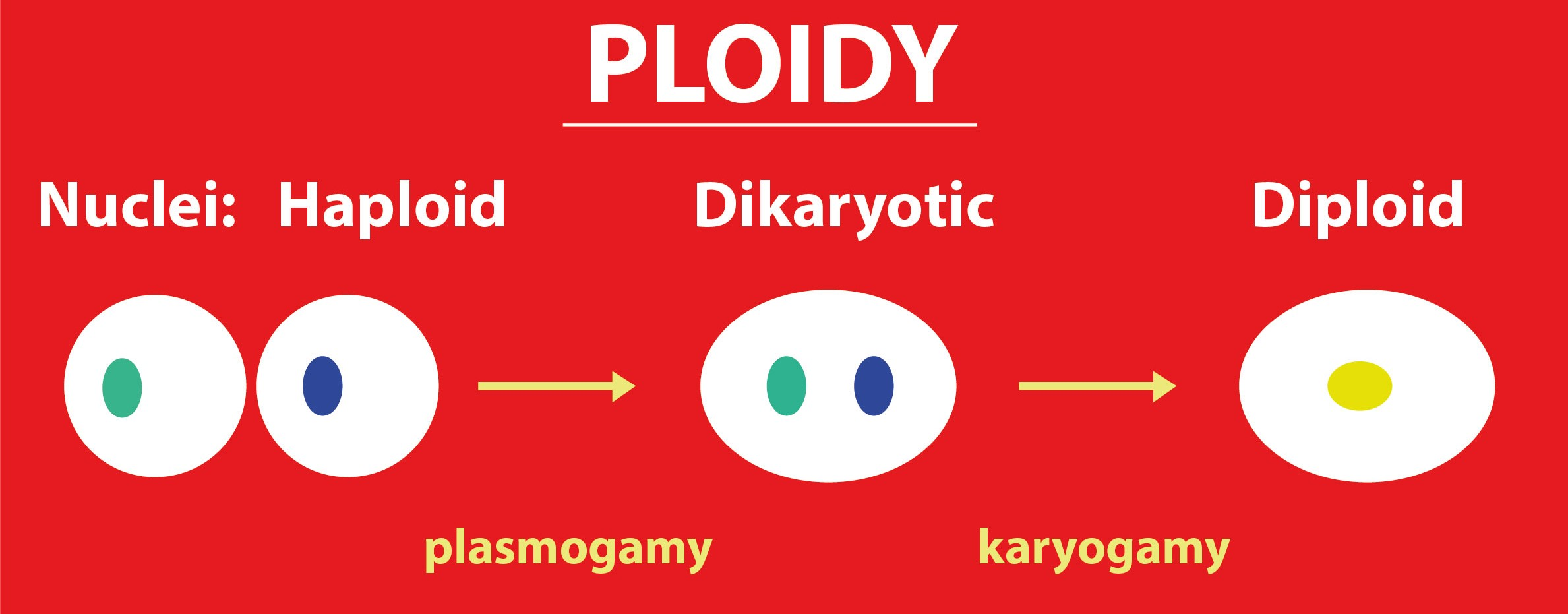
Differentiate between n, 2n, and n+n conditions.
Answer
474.3k+ views
Hint: The letter ‘n’ is defined as the number of chromosomes present in the somatic cell. The single letter ‘n’ represents the haploid condition which means that the cell possesses a half number of chromosomes.
Complete step by step answer:
- The n represents the haploid condition. During this condition, the cell possesses a half number of chromosomes. For instance, 23 chromosomes represent the haploid (n) condition in humans.
- The 2n represents the diploid condition. During this condition, the cell possesses two sets of chromosomes. For instance, 46 chromosomes represent the diploid (2n) condition in humans.

- The n+n represents dikaryotic conditions. During this condition, an intervening stage occurs where the cell possesses two nuclei per cell and is named dikaryon. Later the 2 nuclei fuse and therefore the cell becomes diploid. It occurs mainly in classes and Basidiomycetes of fungi.
Additional Information: Ploidy is that the number of complete sets of chromosomes during a cell, and hence the number of possible alleles for autosomal and pseudoautosomal genes. Somatic cells, tissues, and individual organisms are often described consistent with the number of sets of chromosomes present: monoploid (1 set), diploid (2 sets), triploid (3 sets), tetraploid (4 sets), pentaploid (5 sets), hexaploid (6 sets), heptaploid also known as sepaloid (7 sets), etc. The generic term polyploid is usually wont to describe cells with three or more chromosome sets.
Note: Many species of fungi undergo a reproductive phase in which more than one genetically distinct nuclei is present within the same cytoplasm. In the Ascomycota and Basidiomycota, this phase is termed "dikaryotic", whereas in some other fungal phyla the phase is "heterokaryotic''.
Complete step by step answer:
- The n represents the haploid condition. During this condition, the cell possesses a half number of chromosomes. For instance, 23 chromosomes represent the haploid (n) condition in humans.
- The 2n represents the diploid condition. During this condition, the cell possesses two sets of chromosomes. For instance, 46 chromosomes represent the diploid (2n) condition in humans.

- The n+n represents dikaryotic conditions. During this condition, an intervening stage occurs where the cell possesses two nuclei per cell and is named dikaryon. Later the 2 nuclei fuse and therefore the cell becomes diploid. It occurs mainly in classes and Basidiomycetes of fungi.
Additional Information: Ploidy is that the number of complete sets of chromosomes during a cell, and hence the number of possible alleles for autosomal and pseudoautosomal genes. Somatic cells, tissues, and individual organisms are often described consistent with the number of sets of chromosomes present: monoploid (1 set), diploid (2 sets), triploid (3 sets), tetraploid (4 sets), pentaploid (5 sets), hexaploid (6 sets), heptaploid also known as sepaloid (7 sets), etc. The generic term polyploid is usually wont to describe cells with three or more chromosome sets.
Note: Many species of fungi undergo a reproductive phase in which more than one genetically distinct nuclei is present within the same cytoplasm. In the Ascomycota and Basidiomycota, this phase is termed "dikaryotic", whereas in some other fungal phyla the phase is "heterokaryotic''.
Recently Updated Pages
Master Class 9 General Knowledge: Engaging Questions & Answers for Success

Master Class 9 English: Engaging Questions & Answers for Success

Master Class 9 Science: Engaging Questions & Answers for Success

Master Class 9 Social Science: Engaging Questions & Answers for Success

Master Class 9 Maths: Engaging Questions & Answers for Success

Class 9 Question and Answer - Your Ultimate Solutions Guide

Trending doubts
Who is Mukesh What is his dream Why does it look like class 12 english CBSE

Who was RajKumar Shukla Why did he come to Lucknow class 12 english CBSE

The word Maasai is derived from the word Maa Maasai class 12 social science CBSE

What is the Full Form of PVC, PET, HDPE, LDPE, PP and PS ?

Which country did Danny Casey play for class 12 english CBSE

Differentiate between insitu conservation and exsitu class 12 biology CBSE




